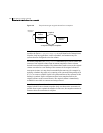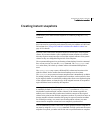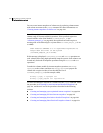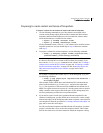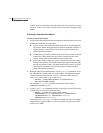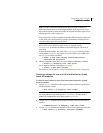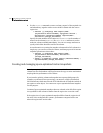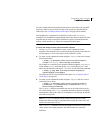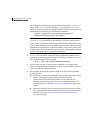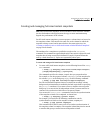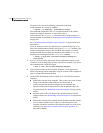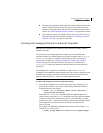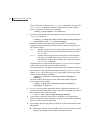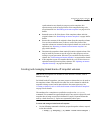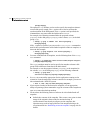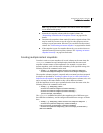
326 Administering volume snapshots
Creating instant snapshots
For example, to create the space-optimized instant snapshot, snap4myvol,
of the volume, myvol, in the disk group, mydg, on the disk mydg15, and
which uses a newly allocated cache object that is 1GB in size, but which can
automatically grow in size, use the following command:
# vxsnap -g mydg make source=myvol/new=snap4myvol\
/cachesize=1g/autogrow=yes alloc=mydg15
Note: If a cache is created implicitly by specifying cachesize, and
ncachemirror is specified to be greater than 1, a DCO is attached to the
cache volume to enable dirty region logging (DRL). DRL allows fast recovery
of the cache backing store after a system crash. The DCO is allocated on the
same disks as those that are occupied by the DCO of the source volume. This
is done to allow the cache and the source volume to remain in the same disk
group for disk group move, split and join operations.
2 Use fsck (or some utility appropriate for the application running on the
volume) to clean the temporary volume’s contents. For example, you can use
this command with a VxFS file system:
# fsck -F vxfs /dev/vx/rdsk/diskgroup/snapshot
3 If you require a backup of the data in the snapshot, use an appropriate
utility or operating system command to copy the contents of the snapshot to
tape, or to some other backup medium.
4 You now have the following choices of what to do with a space-optimized
instant snapshot:
■ Refresh the contents of the snapshot. This creates a new point-in-time
image of the original volume ready for another backup. If
synchronization was already in progress on the snapshot, this
operation may result in large portions of the snapshot having to be
resynchronized. See “Refreshing an instant snapshot” on page 337 for
details.
■ Restore the contents of the original volume from the snapshot volume.
The space-optimized instant snapshot remains intact at the end of the
operation. See “Restoring a volume from an instant snapshot” on
page 340 for details.



